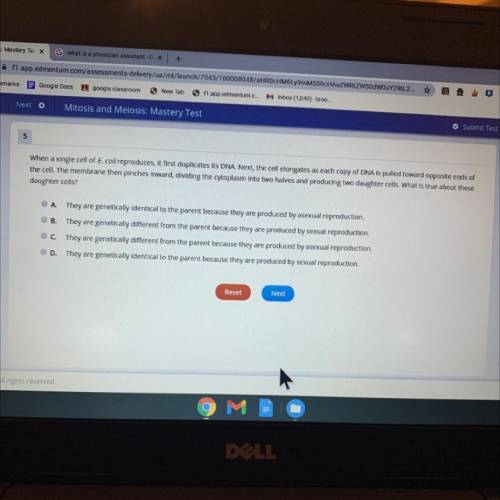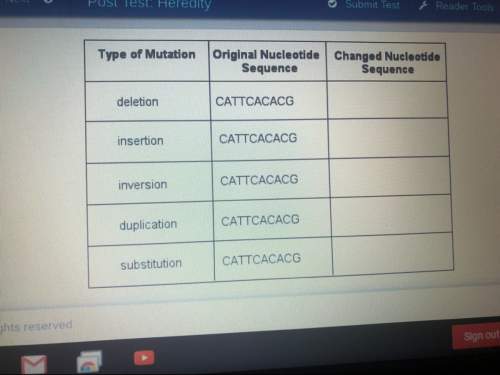
Biology, 26.01.2021 04:00 linnybear300
When a single cell of E. coli reproduces, it first duplicates its DNA. Next, the cell elongates as each copy of DNA is pulled toward opposite ends of
the cell. The membrane then pinches Inward, dividing the cytoplasm into two halves and producing two daughter cells. What is true about these
daughter cells?
A. They are genetically identical to the parent because they are produced by asexual reproduction.
OB.
They are genetically different from the parent because they are produced by sexual reproduction.
C. They are genetically different from the parent because they are produced by asexual reproduction.
OD They are genetically identical to the parent because they are produced by sexual reproduction.


Answers: 3


Other questions on the subject: Biology

Biology, 21.06.2019 15:00, wileycheyennem
The images show fossils of a modern bird and two extinct organisms (a tyrannosaurus rex and an archaeopteryx). based on the structure of the three organisms, it can be concluded that . the archaeopteryx and bird have wings, while dinosaurs have limbs. so, it can be concluded that .
Answers: 1

Biology, 21.06.2019 17:40, danielamadrid79
Ageologist determines that a sample of a mineral cant be scratched by a steel nail but can be scratched by a masonry drill bit based on this information the sample mineral has to be softer than
Answers: 2


Biology, 21.06.2019 22:00, RSanyuathey711
Cell specialization occurs by the process ofa. reproductionb. differentiationc. maturationd. growth
Answers: 2
You know the right answer?
When a single cell of E. coli reproduces, it first duplicates its DNA. Next, the cell elongates as e...
Questions in other subjects:




Chemistry, 10.03.2021 16:30

Mathematics, 10.03.2021 16:30


Mathematics, 10.03.2021 16:30


Geography, 10.03.2021 16:30




